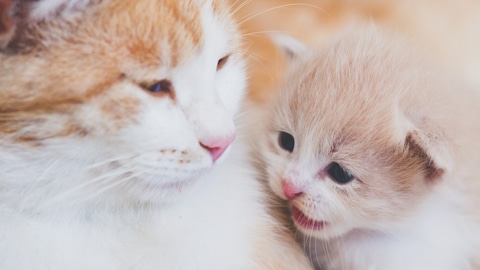Behavior, Everything, Cats, Pet Care
Understand and Communicate with Your Cat
Fluffy purrs when you stroke her head. Your hand moves down her back, along her soft fur. You feel the pleasure of connecting with your feline friend. Suddenly her teeth or claws meet your skin.
Your cat didn’t turn into a monster. She gave you feline messages that she’d had enough, but we humans tend to be dense about understanding cat-speak.
Pay attention to cat body language The eyes, the ears, the whiskers, the posture, and the tail together help show what’s happening in a cat’s mind.
- Greetings When cats greet each other and their human friends, they rub the full length of their bodies against the other animal or the person to mingle their odors. They hold their tails high.
- Territory marking Cats rub against people and objects to mark territory by establishing their scent on the person or object.
- Happiness Happy cats carry their tail high when they’re standing or walking. They knead their paws when they’re content. Their whiskers are extended, their eyes are wide open, and their ears are pointed forward and out a bit or moving to take in sounds. They may purr — but cats purr at other times too.
- Affection Your cat touches her nose or paw to your face and perhaps licks you. Some cats give little love bites.
- Interest Cats prick their ears and look with their eyes wide open. Their tail may be vertical with a curled tip. Their whiskers are fully extended.
- Curiosity or excitement The tail twitches.
- Sleepiness The eyes are half-closed.
- Submissiveness The tail is held low to the ground and might be moving. The ears are flattened against the head. Cats may show submissive body language when they feel the need to defend themselves.
- Anxiety or fear Cats sometimes purr when feeling distress or pain. They hiss when they feel threatened. The ears may move back and forth, or they may be down rather than erect.
- Irritation When cats aren’t happy about something, they twitch the tip of their tail or swish the whole tail. Also look for ears laid back and whiskers pulled in toward the face.
- Anger A bushy tail with flattened ears means “Watch out.”
- Ready to attack Often the first warning sign of an impending attack is a twitching or lowered tail. If the tail is arched or bristling and the pupils are dilated, an attack may be imminent.
A change in your cat’s typical body language can indicate that your cat is sick. If you observe unexplained changes, you may want to take your cat to her veterinarian.
Learn how your cat communicates
Sound is a minor method of adult cat-to-cat communication. When cats observe humans communicating with sound and they use sound themselves, they find that humans often respond. Cats meow to be let in or out, to demand food, to greet people, to get attention, to show pleasure or displeasure, and to ask for help. We humans are too illiterate to understand all of the needs and feelings that cats express.
Listen to the types of vocalizations your cat makes. Each one has a different meaning.
Cats can communicate a lot with their eyes. Look at your cat when she’s talking to you (vocally or non-vocally), and at various times, you’ll see affection, annoyance, confusion, fear, playfulness, and contentment.
Each cat has her own way of saying what she wants. Does your cat try to lead you to her goal? Does she sit in a particular spot or in a specific way when she wants something? What is her way of telling you that the litter box needs to be cleaned, or that the food isn’t to her liking? How does she try to get you to pet or scratch her exactly where and how she wants to be touched?
Interact on her terms
Many cats like to be held, but no cat likes to be restrained. Except at the rare times when you have to restrain your cat, let her go whenever she asks to be let go. Chances are that she’ll be more co-operative at difficult times if she can trust you not to restrain her unless you need to.
Try stroking your cat softly with one finger. Just touch the tips of the fur without touching the cat’s body. Leave her wanting more, and she’ll tell you if she wants more.
If a cat doesn’t want to be touched, don’t force your touch on her. Let her come to you if she wants to. She may sniff your hand and rub against it, and then accept petting — it’s now her choice.
Communicate with your cat
Cats respond to the tone of voice they hear, and to a few words that they learn. They also respond to your proximity, your facial expression, your body position, and your speed of movement.
Talk to your cat. Although she won’t know most of the words, she’ll understand the emotion in the tone of voice.
Cats have learned to use human-speak methods with their variety of sounds, and they appreciate our efforts to use cat-speak. Talk to your cat in your mind while you’re looking at her. Pay close attention to her body language and eye expressions along with her vocal communication. Follow her cues.
Read cat-speak
The more adept you become at understanding your cat’s body language and sounds, the more you’ll be able to avoid handling her in ways that she doesn’t like. You’ll also be able to understand her wants with her earlier cues.

